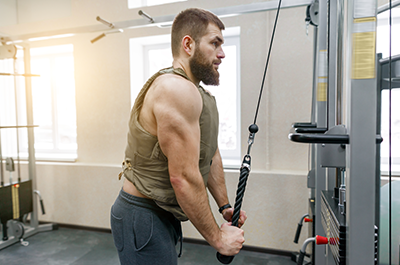Lots of things tend to get better with age: career advancement, deep friendships and life wisdom. While it hardly seems fair, health and fitness aren’t on that list.
Aging is generally defined as an accumulation of biological events that cause the body to deteriorate over time, but there is such thing as secondary aging. Secondary aging is wear and tear on your body that’s caused by factors like lifestyle, trauma or stress. And it's the biggest reason to not compare yourself to your peer group because thanks to secondary aging, 50 or 60 looks different on everyone.
Osteoporosis is another factor that comes into play. More than 44 million Americans over the age of 50 suffer from osteoporosis. Millions more deal with conditions like arthritis, obesity and vascular issues brought on or worsened in part by age. The best way to prevent chronic illness and secondary aging is to remain active.

- Try a stationary bike. Riding a reclined exercise bike is a great way to keep your cardiovascular fitness in top shape without being too strenuous. Start with a distance or time goal and try to increase it gradually each week by no more than 10%.
- Don't forget strength training. No one says you have to jump on the bench press, but balancing strength training with cardio activities will combat muscle loss. Dumbbells are the perfect over-50 strength solution. Just find a weight you feel comfortable with and aim for at least 2 sets of 10 reps for each exercise.
- Make exercise a group activity. From forming a walking group (or joining a pre-existing one) to taking a water aerobics class, having a workout partner or community can keep you motivated. Many gyms have specific classes for the over-50 set, with exercises that are age-modified.
- Get “everyday” active. There are tons of ways to fit moderate exercise into your daily activities. From raking to stroller pushing, many common activities help counteract muscle atrophy (or muscle loss) and improve cardiovascular health. Don’t skip those tasks – extend them to get a better workout!
You don’t have to run marathons or perform the same feats as you did in your 20s to be active. Your body is like a car, and if your legs are your tires, it’s easy to understand how they can wear down significantly over time. So don’t be too hard on yourself. And keep in mind that exercise can help with that since it also elevates your mood.
That said, if you've always been active, there's no need to slow down solely because you're getting older. Run the marathon, do an Ironman triathlon, even take up a new sport. Remember, people are capable of all different levels of activity and Baby Boomers are not your typical grandparents. It’s true what they say: 60 is the new 50. So keep active and make each birthday just a chronological fact, not an indication of what you’re capable of. Fitness over 50 is what you make of it.
Christina Chapski, Ed.D., AT, ATC, is the Director of Athletic Training and Community Outreach at Henry Ford Health. Read more of Christina's articles.



